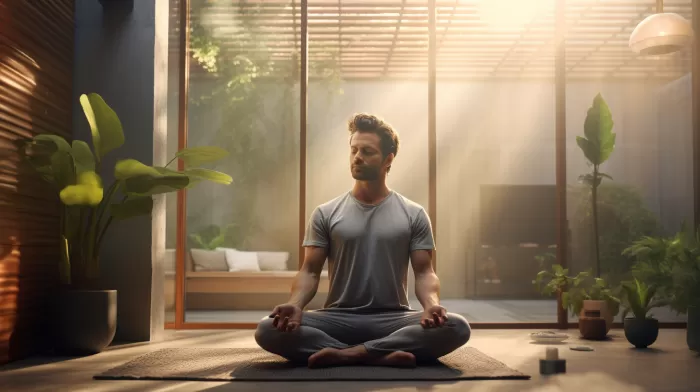An aching lower back can make life difficult. With 31 million Americans experiencing low back pain at any given time, it’s the leading cause of disability globally. People in the US alone spend over $50 billion each year trying to find relief from back pain. Although physical therapy is a common treatment for back pain, 70% of patients don’t attend all of the recommended visits. However, recent research offers an alternative: yoga. Studies have demonstrated that practicing yoga is just as effective for relief as physical therapy, with the potential to improve pain and function and reduce dependence on pain medication.
The benefits of yoga for back pain
The benefits of yoga in improving pain levels, overall function, and reducing the need for pain medication have been well documented, and this is the first study to compare yoga with physical therapy for back pain relief. One 75-minute class per week was found to be just as effective as physical therapy in providing relief for chronic back pain. Additionally, participants reduced their need for pain medication by 20%. With the ease of practicing yoga at home, this offers a more accessible solution to back pain sufferers.
Starting your yoga practice
If you’re ready to resolve your low back pain, yoga is a great choice, and all you need is a mat and a DVD or an online video. You don’t have to worry about high co-pays or limits on the number of visits; you can practice in your own home. The key is to start slow and gentle, giving your back time to adjust to the changes and learning the correct way to perform each pose.
How yoga boosts spinal health
Yoga is beneficial for spine health in several ways. It lengthens the spine, helps stretch and strengthen muscles, improves balance and range of motion, and aids in returning the back to its proper alignment. Incorporating this ancient practice into your life could be the solution to ending low back pain for good. Make sure to follow safety guidelines to avoid injury and consult your healthcare provider before starting any new exercise routine.
Exploring different yoga styles
There are many styles of yoga, each with its unique benefits and suitable for different levels of fitness. Some common styles include:
- Hatha: This slow-paced, gentle form of yoga focuses on basic postures and is perfect for beginners.
- Vinyasa: A more vigorous style of yoga, with postures flowing smoothly from one to another. This style is ideal for those seeking a more athletic practice.
- Yin: This restorative practice focuses on passive stretching, targeting the connective tissues, and is suitable for all levels.
- Iyengar: This style emphasizes precise alignment and uses props like blocks, straps, and bolsters to help students achieve correct posture. It’s ideal for those working with injuries, chronic conditions, or alignment challenges.
- Kundalini: Combining physical exercises with breathwork and mantras, this style aims to release energy stored at the base of the spine. This spiritually focused practice is suitable for all levels.
Yoga for back pain relief
Some yoga poses to incorporate into your practice for back pain relief include:
- Cat-cow: This gentle sequence of poses helps to stretch and mobilize the spine.
- Child’s pose: A restorative posture that lengthens the spine and releases the lower back.
- Downward-facing dog: This invigorating stretch opens up the entire back of the body.
- Cobra pose: A gentle backbend that strengthens the muscles along the spine.
- Bridge pose: A backbend that helps to strengthen the lower back and glutes.
Take the time to find a style of yoga and specific poses that work best for you. Listen to your body and progress at your own pace. With consistency and patience, yoga can be an effective way to manage and even alleviate back pain.
In conclusion, yoga offers a more accessible and enjoyable solution to physical therapy for back pain relief. By incorporating a regular yoga practice into your life, you can experience improved pain levels, increased mobility, and reduced dependence on pain medication. Start slow, listen to your body, and consult a healthcare provider before beginning any new exercise routine. With dedication and patience, yoga can be the key to overcoming persistent back pain.



